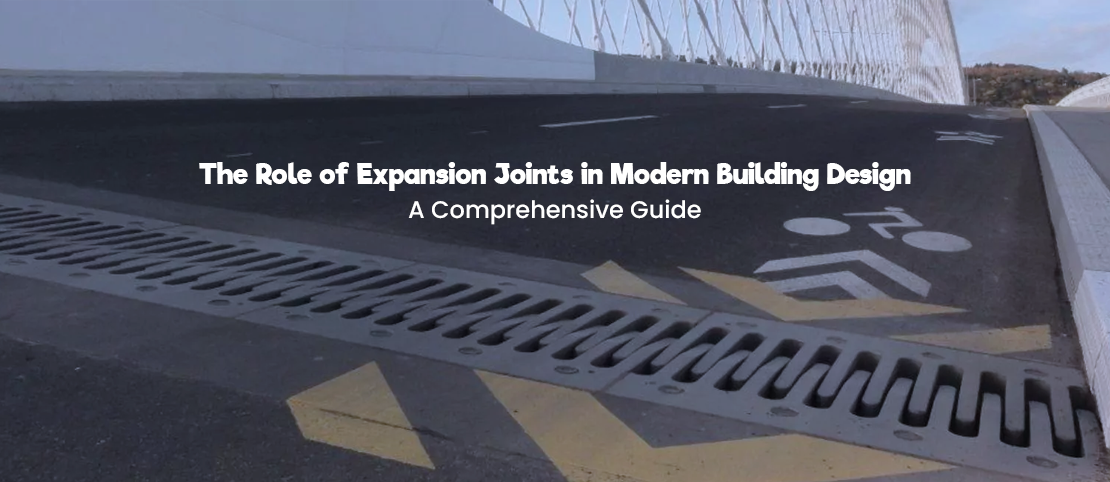The Role of Expansion Joints in Modern Building Design: A Comprehensive Guide
The marvels of contemporary architecture, including towering skyscrapers, intricate bridges, and complex structures, stand as a testament to the ingenuity and engineering prowess of humanity. However, there exists a pivotal element that often goes unnoticed despite its significant role in their construction: expansion joints. In this comprehensive guide, we will delve into the importance of expansion joints in modern building design.
What Are Expansion Joints?
Expansion joints are strategic elements integrated into the construction of buildings to facilitate movement and absorb structural stresses. These joints enable a building to expand, contract, and shift in response to temperature variations, seismic activity, and settling. In essence, they act as the "flexible joints" of a building, preventing cracks, damage, and water infiltration.
Water-Tightening Expansion Joints
One critical function of expansion joints is a water-tightening expansion joint. Modern building designs often incorporate various water-tightening expansion joints to protect the building's interior from water intrusion. These joints are strategically placed in areas prone to exposure to moisture, such as roofs, balconies, parking structures, and below-grade spaces.
Key Features of Water-Tightening Expansion Joints
Sealing Mechanism: Water-tightening expansion joints use specialized sealant materials that effectively seal gaps, preventing water from infiltrating the building envelope.
Flexibility: These joints are designed to move with the building, accommodating expansion and contraction without compromising their water-tight integrity.
Durability: The materials used in water-tightening expansion joints are chosen for their resistance to water, UV rays, and other environmental factors, ensuring long-lasting performance.
Movement Joints
Expansion joints are often referred to as movement expansion joints due to their primary function of accommodating structural movement. These joints come in various types, including expansion joints, contraction joints, and isolation joints, each serving a specific purpose.
Key features of Movement Joints
Preventing Cracks: Movement joints absorb the stresses caused by temperature fluctuations and structural movements, preventing unsightly and potentially damaging cracks in the building's surface.
Structural Integrity: By allowing controlled movement, these joints help maintain the structural integrity of the building, prolonging its lifespan.
Safety: In seismic regions, movement joints are essential for reducing the risk of structural failure during an earthquake by allowing controlled movement and dissipating energy.
Types of Expansion Joints
Expansion Joints: Expansion joints are designed to accommodate thermal expansion and contraction, which occurs as temperatures fluctuate. Without expansion joints, buildings would be susceptible to cracks and damage caused by these temperature-related movements.
Contraction Joints: Contraction joints help control and limit the shrinkage that occurs as concrete cures and dries. They prevent unsightly and potentially structurally compromising cracks from forming.
Isolation Joints: Isolation joints are used to separate different sections of a building or adjacent structures. They provide a buffer that prevents movement in one section from affecting another, enhancing structural stability.
The Significance of Expansion Joints
Expansion joints serve several crucial purposes in modern building design:
Preventing Structural Damage: By allowing controlled movement, expansion joints prevent the formation of cracks, ensuring the structural integrity of the building over time.
Enhancing Safety: In regions prone to seismic activity, expansion joints play a critical role in absorbing the energy generated during an earthquake, reducing the risk of structural failure.
Maximizing Lifespan: Properly designed and placed expansion joints contribute to the longevity of a building by minimizing wear and tear due to movement and external forces.
Aesthetic Considerations: Architects and designers often incorporate expansion joints into the building's design to maintain a visually appealing and seamless appearance while accommodating necessary movement.
Examples of Expansion Joint Applications
Bridges: Expansion joints on bridges allow for the expansion and contraction of the bridge deck due to temperature changes and vehicle loads.
Skyscrapers: Tall buildings are subjected to various forces, including wind-induced sway. Expansion joints help absorb these forces, preventing structural damage.
Highways: Expansion joints in roadways accommodate the movement of concrete slabs, preventing the formation of cracks and ensuring a smooth driving surface.
Integration in Modern Building Design
Modern architects and Modern building material suppliers recognize the importance of expansion joints in ensuring the longevity and functionality of their designs. These joints are seamlessly integrated into the overall building structure, often hidden from view to maintain aesthetic appeal while providing essential structural support.
Related Posts
Comments
By accepting you will be accessing a service provided by a third-party external to https://www.mbt-techserv.com/



